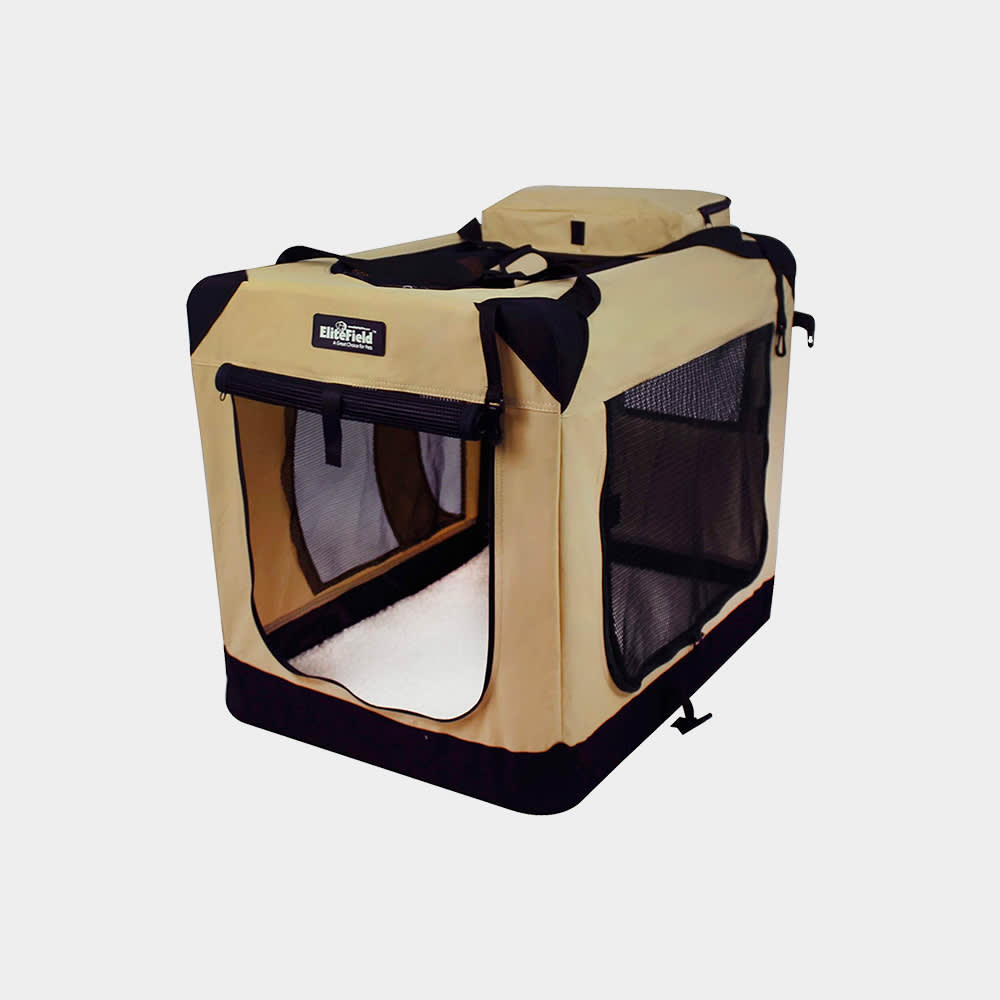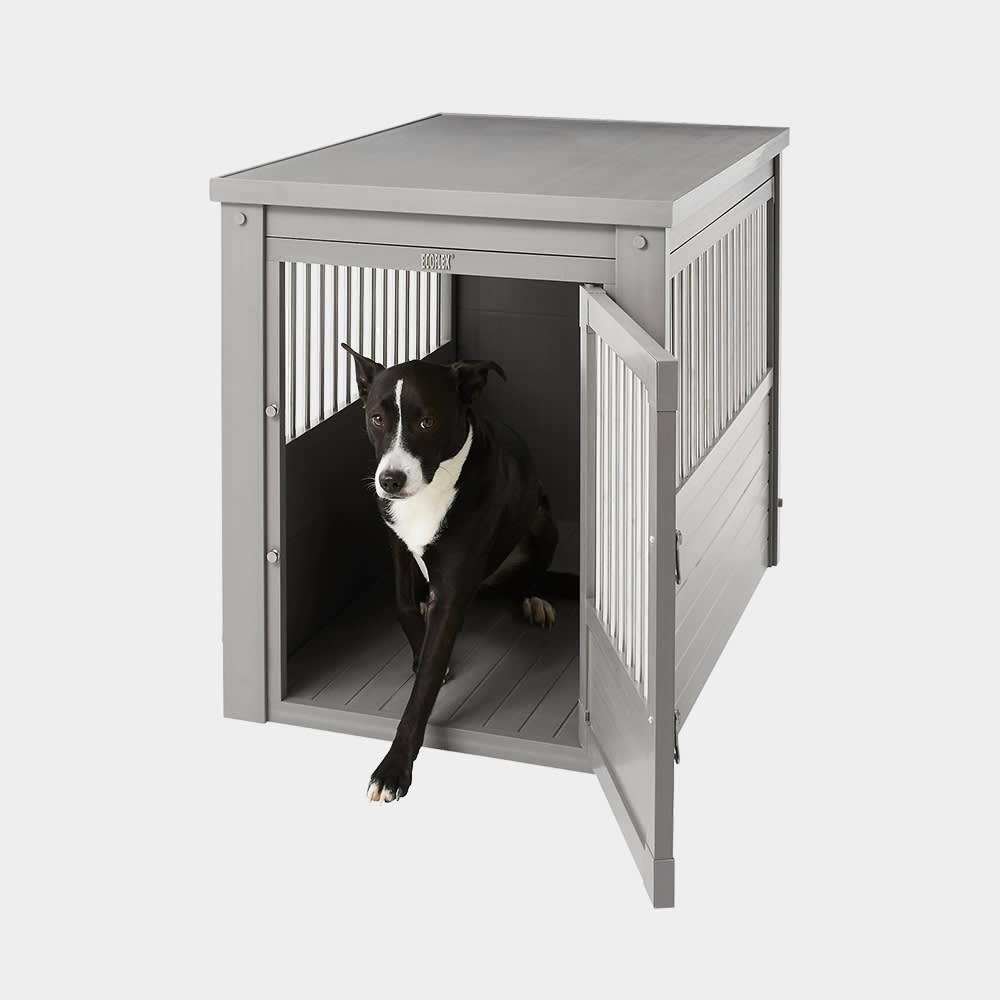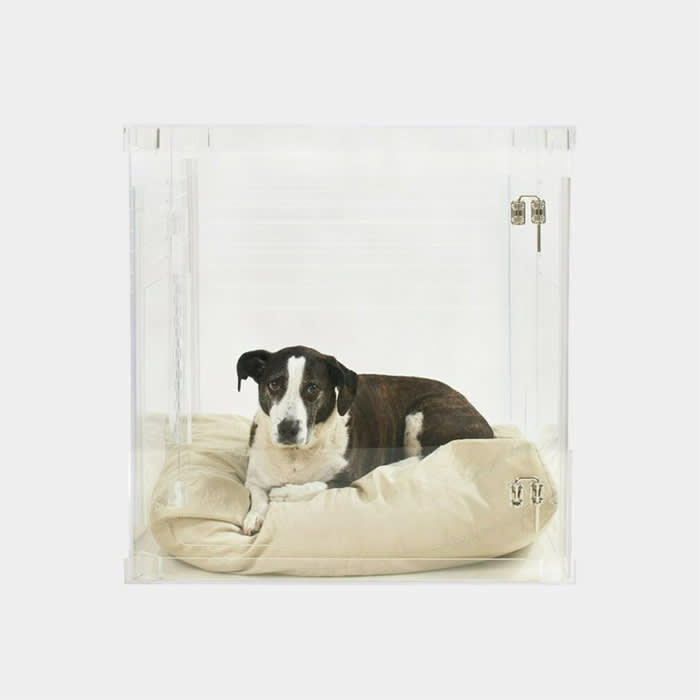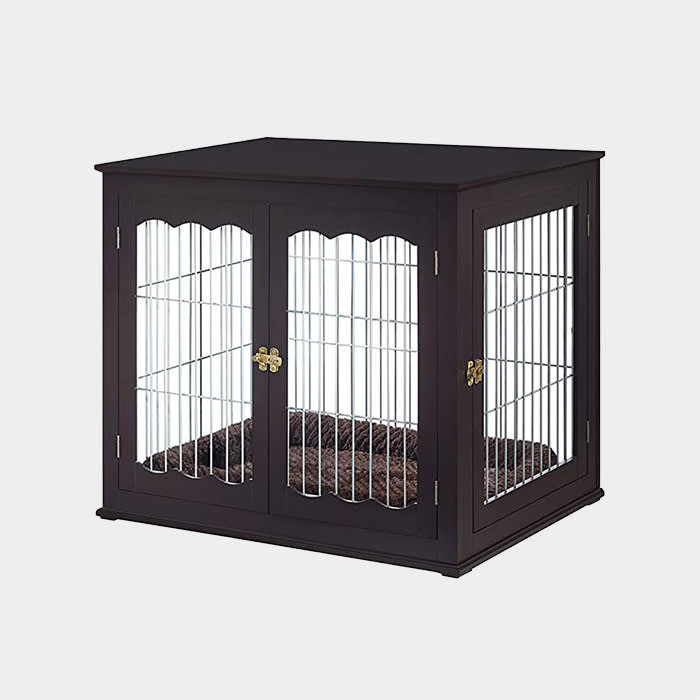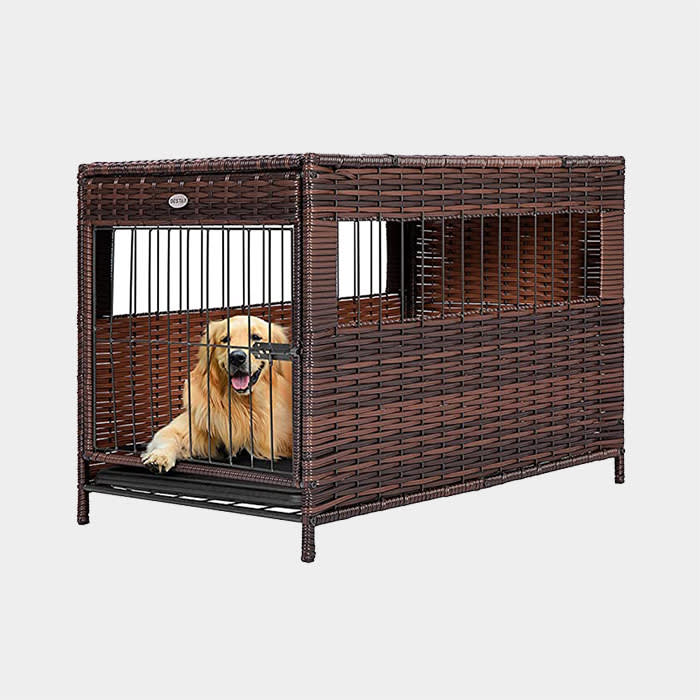Gimme Shelter: The Best Dog Crates
Spend less time searching for your dog’s house than you do on Zillow.
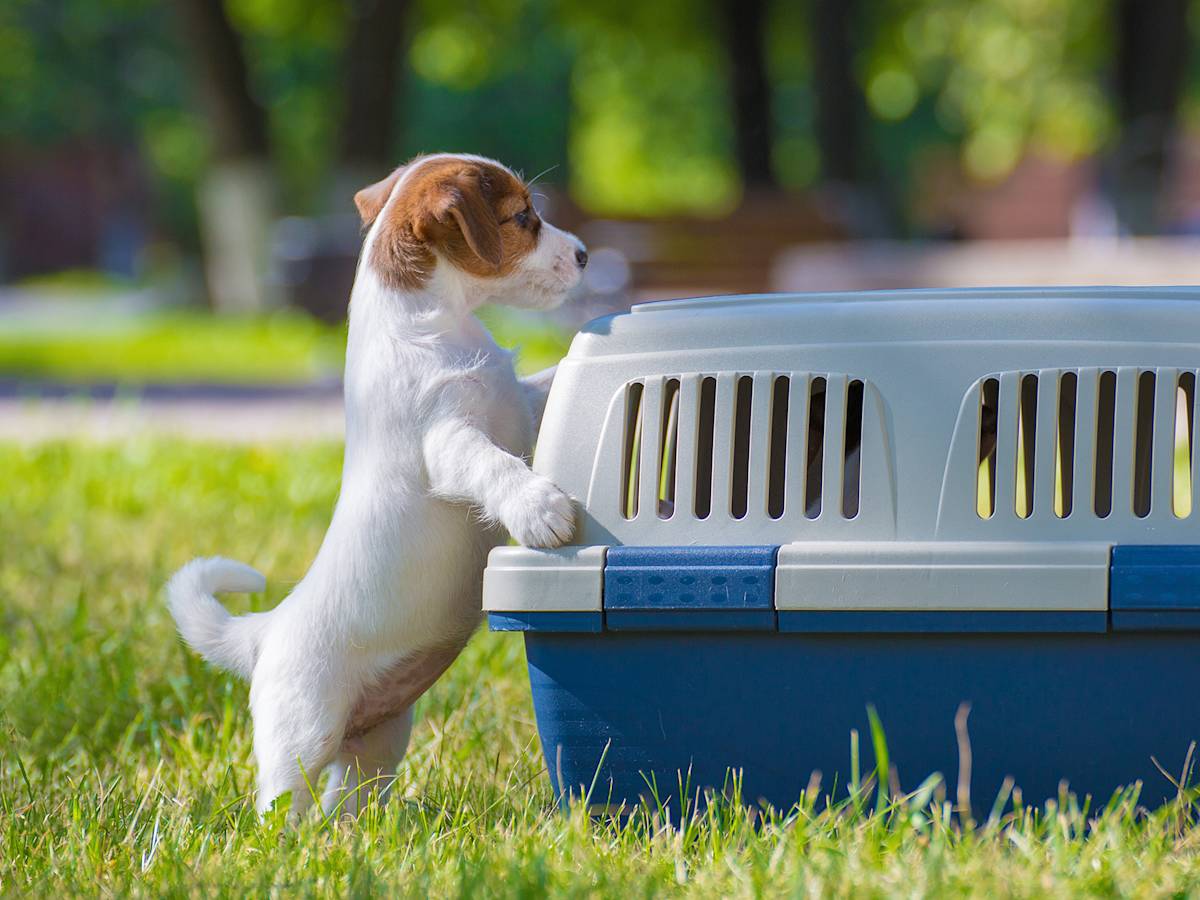
Share Article
Think about all the little nuances you’ve obsessed over when it comes to your own living space, from mid-century modern furniture to palm leaf-printed wallpaper. It’s a labor of love to get everything set up, but once you do, your home becomes a refuge from whatever else is going on in the world. If you get the details right, a dog crate can provide the same kind of safe haven for your pup. There are tons of options out there — the good, the bad, and yes, the ugly — but we’ll help you break down which one is right for your dog with a handy list of questions to ask yourself before you start shopping.
1. Does my dog even need a crate?
A fair question. The first thing to know is that The Association of Professional Dog Trainersopens in new tab (APDT) recommends using a crate as a short-term training tool for puppies and dogs, then as a safety precaution later in life. The earlier you familiarize your pup with a crate, the more comfortable they’ll be with it. At home, they’re great tools for housebreaking and deterring destructive behaviors like, oh, you know, eating the couch cushions. If all goes as planned, crates can eventually feel like a safe space for your dog when they’re feeling overwhelmed, if you’re unable to supervise them, or when they have to stay overnight away from home. On the latter note, they are also a safe way to travel with your dog.
All that said, crates are not recommended for containing dogs for extended periods of time or for punishment — this will only teach your dog to avoid the crate and stress them out when they’re in it. Anxious dogs, especially those with separation anxiety, should also not be crated because they could harm themselves trying to escape.
2. What size does my dog need?
“The crate needs to be big enough so that your dog can lay on its side, stretch its legs out, and also stand up comfortably,” says Dr. Elizabeth Shines, DVM. But bigger isn’t always better — if you’re using the crate to housebreak your dog, the crate shouldn’t be too spacious. “You want to encourage your pup to hold their bladder, and if they have a big crate, they may just poop in one corner and sit in the other. If you have a particularly hard-to-housebreak dog, you might need to experiment with crate size.”
3. Are crates comfortable?
It may seem obvious, but you want to make sure your dog’s crate is located in an area with good air circulation. In general, it should let light in, but some dogs prefer their crates to feel more cave-like, in which case you can drape a blanket over it. It really comes down to making the crate a safe space for your dog so that they’ll want to spend time in it. You can do this by lining it with soft bedding (once your dog is house-trained, unless you want to continuously do laundry) and tossing a chew toy in there to sweeten the deal — so long as you’re supervising and it’s not something they can potentially choke on.
4. How portable are crates?
Dr. Shines and the APDT both recommend collapsible wire crates because they’re strong and durable, but still pretty lightweight. They’re also easy to store and pack up for travel. Read the fine print on those: Some crates come in one piece and simply fold up, while others have pins that need to be removed to collapse the sides — which can feel like disassembling an IKEA bookcase. Canvas crates are also portable, but if your dog is an escape artist, that type of crate is probably too flimsy.
5. How will I clean it?
“Fur definitely accumulates around the edges of a wire crate,” admits Dr. Shines. “It’s not a contained system.” That shouldn’t be a dealbreaker, though; it just means you’ll need to be diligent about vacuuming — something you might want to accept now that you’re welcoming a hairy creature into your home. On the upside, wire crates come with removable trays underneath, which you can easily take out and hose down if your dog makes a mess.
6. Will it clash with my home decor?
With so many options out there, dog crate furniture is an example of form and function. “If you don’t like the look of crates, there are ones designed to look like end tables and bureaus, so they are both decorative and functional,” says Dr. Shines. “As long as your dog won’t chew their way through wood, it’ll work great.” Without further ado, our top five picks…
Btw, our editors (and their pets) picked out these products. They’re always in stock at the time we publish, but there’s a chance they’ll sell out. If you do buy through our links, we may earn a commission. (We’ve got a lot of toys to buy over here, you know?)

Amy Marturana Winderl
Amy Marturana Winderl is a freelance writer and editor based in central New York. Her work has appeared on SELF, HealthCentral, Martha Stewart Living, LIVESTRONG, Outside, and more.


